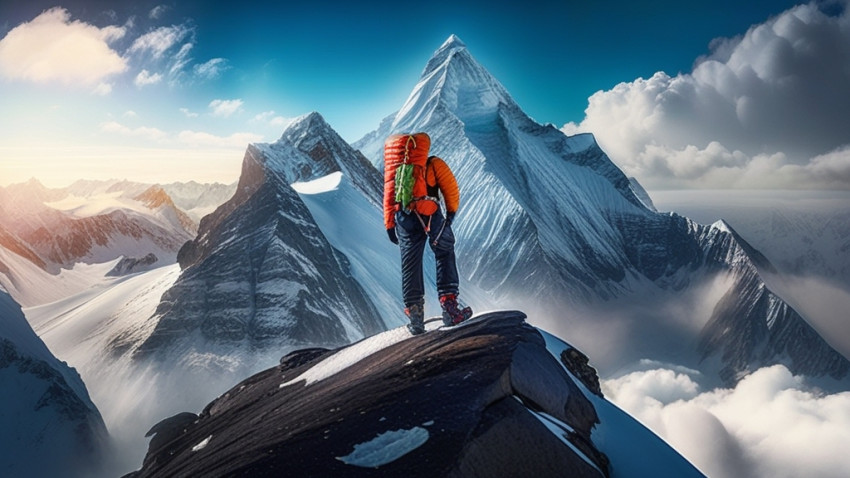
Introduction: Island Peak, also known as Imja Tse, is one of the most popular trekking peaks in the Everest region of Nepal. Standing at an elevation of 6,189 meters (20,305 feet), it offers a challenging yet achievable climb for trekkers with basic mountaineering skills. The peak is an extension of the south ridge of Lhotse Shar and is surrounded by stunning Himalayan scenery, including the iconic Ama Dablam.
Preparation:
Permits:
- Obtain the necessary permits for trekking and climbing in the Everest region. The most important permit is the Sagarmatha National Park Entry Permit.
Physical Fitness:
- Island Peak Climbing requires a good level of physical fitness. Regular cardiovascular and strength training is recommended in the months leading up to the climb.
Acclimatization:
- Acclimatize properly by spending several days at higher altitudes. This helps prevent altitude sickness and enhances your chances of a successful summit.
Gear:
- Ensure you have the appropriate gear, including sturdy trekking boots, warm clothing, a down jacket, a good sleeping bag, and mountaineering equipment such as crampons, ice axe, and harness.
Itinerary:
Arrival in Kathmandu:
- Fly into Kathmandu and spend a day or two organizing permits and checking gear.
Flight to Lukla:
- Take a thrilling flight to Lukla, the gateway to the Everest region, and start trekking towards Namche Bazaar.
Acclimatization Days:
- Spend several days acclimatizing in Namche Bazaar and surrounding areas. Side trips to places like Tengboche and Dingboche are common.
Trek to Island Peak Base Camp:
- Trek towards Island Peak Base Camp, passing through scenic landscapes and picturesque Sherpa villages.
Acclimatization at Base Camp:
- Allow for additional acclimatization at the Island Peak Base Camp. Short climbs to higher altitudes during this period help in acclimatization.
High Camp:
- Move to High Camp, the last stop before the summit push. Ensure proper rest and hydration.
Summit Day:
- Start the summit push early in the morning. The climb involves steep sections, including a glacier crossing. Reach the summit and enjoy breathtaking views of the Everest region.
Descent:
- Descend back to Base Camp and retrace your steps to Lukla.
Tips:
Local Guides:
- Hire experienced local guides and porters. They are familiar with the terrain and can enhance your overall experience.
Weather Conditions:
- Be aware of the weather conditions, as they can change rapidly in the Himalayas. The best climbing seasons are in spring (April-May) and autumn (September-November).
Altitude Awareness:
- Pay attention to signs of altitude sickness and be ready to descend if necessary.
Leave No Trace:
- Respect the environment and adhere to the principles of Leave No Trace. Proper waste disposal is crucial in the fragile Himalayan ecosystem.
Climbing Island Peak is a challenging and rewarding adventure, providing trekkers with a taste of mountaineering in the stunning surroundings of the Everest region. Always prioritize safety and enjoy the journey to the summit!






